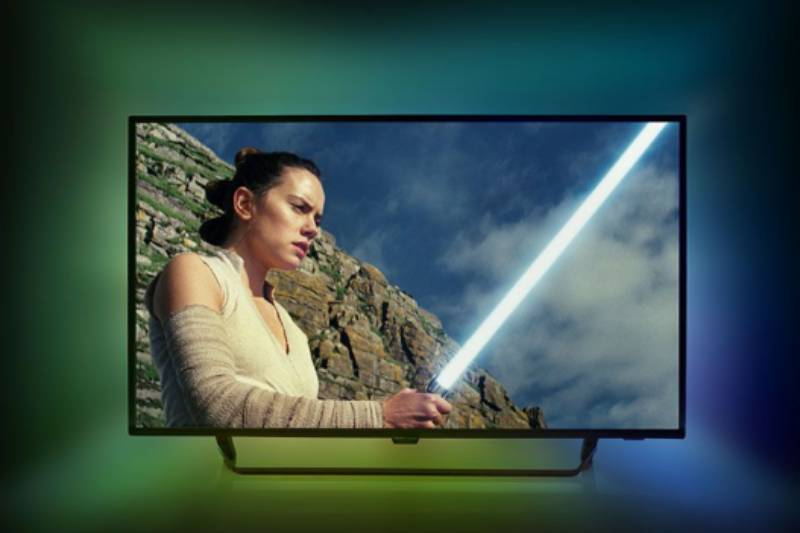
How to choose the right TV: what size TV should you buy? 4K or 8K? OLED or LED?
TV tech has come on leaps and bounds in the last few years, so if you're due an upgrade you may well be baffled by the modern TV buying experience. Should you get an OLED or a QLED? An LED or an LCD? And what streaming apps do you need?
Not only have TVs upped the picture performance game across the board (all but the smallest, cheapest models now have a resolution of at least 4K), there are also brand new technologies to wrap your head around, such as HDR, OLED and QLED, alongside the basic questions of screen size, TV placement, number of inputs and “does it have Netflix?”.
Daunting, eh? To try to make it less so, we’ve come up with a comprehensive TV buying guide, which should make the experience much less painful. Whether you have a few hundred or a few thousand to spend, we'll help you choose the right TV for you.
Which TV screen size?

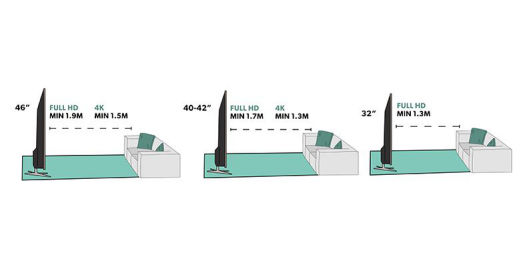
There’s more focus on bigger screens than ever before, with fewer 32in and 40in models appearing in new TV line-ups thanks to the rise of big-screen-justifying Ultra HD 4K resolution.
RECOMMENDED VIDEOS FOR YOU...
But while it might be tempting to think that bigger is better, the size of set that’s right for you is closely dependent on how close to the screen you’ll be sitting, and the resolution of the source material you’re watching.
Luckily, an organization called SMPTE (which stands for the Society of Motion Picture and Television Engineers) has published detailed guidelines on exactly how far you should sit in order to optimize the performance of your TV.
If you’re sitting the correct distance from your TV, you’ll see lots of detail, good edge definition and smooth, clean motion, but if you’re sitting too close to the screen, then you’re going to see more picture noise and artefacts.
On the other hand, sit too far away from the TV and you’ll struggle to pick up all the picture detail your TV has to offer.
The SMPTE rule for watching Full HD TV (1080p) is that you should be sitting a minimum of 1.5-to-2 times the diagonal size of your TV away from the screen. You can sit closer to the screen if you have a 4K TV – about one-to-1.5 times the screen size – as you’ll notice fewer artefacts thanks to the higher resolution.
The following distances are a good place to start:
- 65in - minimum 2.5m (Full HD) or 2.1m (4K)
- 50-52in - minimum 2.2m (Full HD) or 1.7m (4K)
- 46in - minimum 1.9m (Full HD) or 1.5m (4K)
- 40-42in - minimum 1.7m (Full HD) or 1.3m (4K)
- 32in - minimum 1.3m (Full HD)
Note that the type of TV you want - a LCD, QLED or OLED - could impact your decision about TV size so bear that in mind when reading this section of the buying guide below.
For example, those wanting an OLED TV should know that you're looking at a minimum of 48 inches, with most options around the 55in and 65in size. The rivalling QLED alternative is slightly more flexible, available from 43in sizes. Want an 8K TV? You're 'limited' to 55in and above.
4K or not 4K?
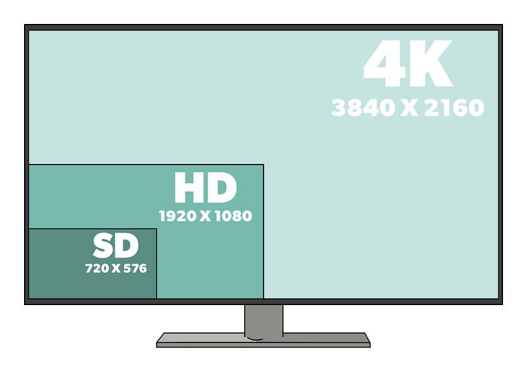
This might seem like a no-brainer at first, but should you really go for a 4K TV over a Full HD set?
The higher resolution sets – four times that of Full HD – have been adopted far quicker than 1080p was back in the day. Funny when you think only six or seven years ago, 4K was no less new-fangled than the cronut.
Despite the potential to cost a pretty penny (especially if you’re going for a larger screen size), 4K TVs are very much affordable and mainstream these days. You can get 50in 4K TVs for under £500 ($500) – and good ones, too. In fact, it's now harder than you might think to find HD TVs on sale.
HD resolution now only needs to be for smaller screen sizes - between 20 and 40 inches, say - or to satisfy exceptionally tight budgets.
What about 8K?
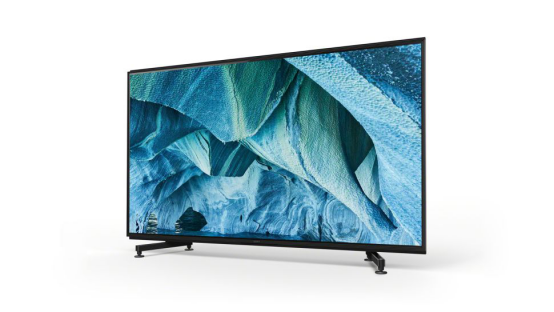
2020 could well be the year 8K TVs 'take off', now that several models are available from a handful of TV brands, in a more reasonable 55in size and not at outrageous prices.
Samsung has been leading the 8K charge in recent years, and has launched no less than eight new 8K TVs for 2020, starting at the same price as a top-end 4K TV. The company's older 8K models, the Q900R and Q950R, are still on sale too.
Sony's 2020 8K TV range starts from £5999 ($7000), while LG also has pricier 8K OLED options.
But should you even be buying an 8K TV? Well, we were blown away by last year's 8K Samsung TVs, being impressed by 8K demo clips and by their upscaling of 4K content.
We also tested the Sony KD-85ZG9, which set a new benchmark for 8K TV performance, producing a brilliant 8K image with native content and doing an excellent job of upscaling too. Needless to say, 8K demonstrations of newer 8K sets in the months since have been even more impressive.
Obviously, the lack of 8K content might reasonably put some people off in the short-term, as might the absence of any compatible HDMI 2.1 inputs (although Samsung says it will provide owners with a new HDMI 2.1-equipped One Connect Box once it becomes available). Sony claims the sockets on its 8K TV do meet the HDMI 2.1 spec and simply need to be fully certified.
That won't be an issue with 2020 8K TVs, although until we get our hands on them (fingers crossed, we will soon) the jury's out on whether they're worth buying over the best-in-class 4K TVs. More aggressive pricing should work in their favor, at least.
If you want to be an early adopter, the plus side is you'll be at the cutting edge of TV tech, but there's a significant cost and a slight risk associated with it, especially given the fact 8K is still in its infancy. A wait-and-see approach is probably still the most sensible for most people... for now. But we may not be saying this by the end of the year!
What about HDR?

High Dynamic Range (HDR) is the TV buzzword that carries on buzzing, and tends to come hand-in-hand with 4K TVs.
Essentially: the higher the dynamic range (brightness and colors), the more lifelike the picture. HDR offers greater subtlety and depth of gradations of colors, plus stronger contrast.
There are various types of HDR out there, and with different TV brands backing different variants, it can be a minefield trying to find the best option. Allow us to explain.
We’ll start with HDR10 – it’s the standard HDR format that you’ll find in all HDR-compatible content, from 4K Blu-ray discs to Netflix and Amazon shows. If you’re buying a 4K HDR TV, HDR10 will come as a bare minimum.
Then there’s Dolby Vision. Unlike HDR10, which applies the HDR values on a scene-by-scene basis (i.e. whenever the camera cuts to a new scene), Dolby Vision HDR applies this image information (called metadata) on a frame-by-frame basis. This dynamic form of HDR, when implemented properly, has the potential to improve upon the standard HDR10 presentation.
HDR10+ is a rival format to Dolby Vision. Created by Samsung, it also uses dynamic metadata but, whereas Dolby Vision is licensed, HDR10+ is a free, open format that any company can deploy as it sees fit.
You’ll find Dolby Vision on select LG, Sony, Panasonic, Philips and B&O TVs, while Samsung has shunned it in favor of its own HDR10+. Panasonic and Philips have recently begun supporting both Dolby Vision and HDR10+.
There’s plenty of Dolby Vision content available right now across Netflix Original shows, Disney+, Apple TV+ and 4K Blu-ray discs.
HDR10+ content is comparatively sparse and found primarily on Amazon Prime Video. However, a number of major movie studios have signed up to use the format and we've started to see 4K discs with HDR10+ also arrive on the scene, such as Bohemian Rhapsody, The Secret Life of Pets 2 and Godzilla: King of the Monsters.
And finally, HLG (Hybrid Log Gamma) is an HDR format developed specifically for broadcasting by the UK's BBC and Japan's NHK. All the big TV brands – Samsung, Sony, LG, Panasonic and Philips – have adopted its support across the majority of their 4K TV ranges since 2018.
So new buyers should be safe in the knowledge that when regular 4K HDR broadcasts arrive, such as those from the BBC and Sky in the UK, they won’t be left out.
What connections will I need?
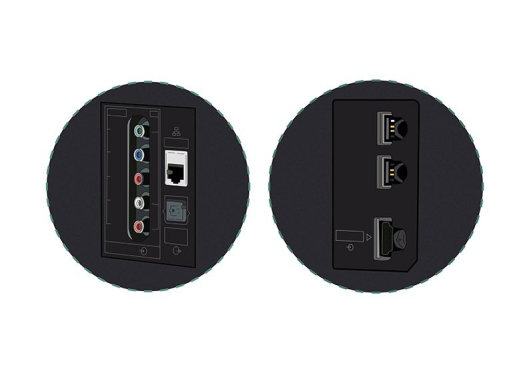
Connections don’t differ on TVs as much as they used to, with most sporting at least three (often four) HDMI inputs – enough, for example, for a Blu-ray player, set-top box, games console and media streamer.
4K TVs will have at least one HDMI port that’s 2.0- and HDCP 2.2-certified for native 4K and HDR content, but we’d check compatibility if you plan to plug in several 4K sources.
HDMI 2.1 is creeping into TV specs, too, bringing much greater bandwidth capability (allowing passthrough of dynamic HDR at 4K/120fps and 8K/60fps, for example) and eARC support. Only LG's 2019 sets were officially HDMI 2.1-certified, but many models from other brands have begun adding HDMI 2.1 features to their HDMI 2.0 connections, and it'll be part and parcel of most 2020 8K (and some 2020 4K) TVs. We don't see HDMI 2.1 as an absolutely essential spec at this point, but do look out for it if you want an extra element of future-proofing.
Planning to boost your TV’s sound with a soundbar or soundbase? You’ll need to plug it into the TV’s HDMI ARC (Audio Return Channel) input – this takes the audio signal directly from TV to soundbar. Alternatively, make sure your TV has optical digital or analogue outputs for the connection.
While some TVs feature composite inputs, most – even at the budget end – have phased out legacy connections such as SCART. So those clinging on to old video cassette recorders, for example, should be aware of that.
What type of screen: OLED, QLED or LCD?

LCD TVs, which require a backlight usually made up of white LEDs to show a picture on the LCD panel, are available in a wide variety of screen sizes and, thanks in part to the technology's low cost of production, at affordable prices.
OLED (Organic Light-Emitting Diode) is a panel technology that uses self-emissive particles – so there's no need for a backlight. This allows OLED TVs to be unbelievably slim, while also offering convincing pitch-dark blacks, strong contrast and superb viewing angles. LG, Sony, Panasonic and Philips are the big brands with OLED TVs in their line-ups. Generally, OLED TVs from these brands have been excellent, with LG's mid-ranging OLED TVs our absolute favorites in recent years.
QLED (Quantum-dot Light-Emitting Diode), meanwhile, is Samsung’s response to OLED. A QLED TV is an LCD TV but with a quantum dot coating over the backlight. However, the quantum dots (tiny semiconductor particles) in current QLEDs do not emit their own light. So QLED TVs, like conventional LCDs, rely on a backlight. The advantages of a QLED TV? You tend to get brilliantly vibrant colors, plus bright, sharp and crisply detailed images. Samsung's QLEDs have got better and better over the years, existing as a fine alternative to OLEDs TVs and last year earning What Hi-Fi? Awards.
Edge-lit or full-array backlight?
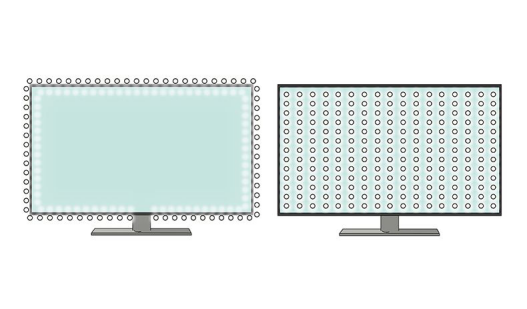
If you’re opting for an LCD TV, the LED backlighting comes in two flavors: edge lighting or direct backlighting.
The former is the most common and cheapest to produce. TVs are ‘edge-lit’ by a row of LEDs bordering and facing the center of the screen, which disperse light across the screen. The benefit? Thinner TVs. The drawback? Often inconsistent contrast, with the edges of pictures brighter than the center.
Alternatively, you can have direct backlighting (or ‘full-array’), which sees LED lights uniformly placed behind the whole screen.
In theory, full direct backlighting typically improves local dimming, i.e. contrast control: simultaneously keeping the dark parts of a picture dark, and the brightest parts bright. The one downside is that this method usually means a slightly thicker TV.
Smart TV apps
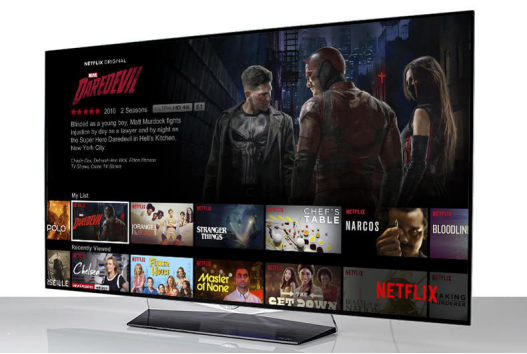
Smart TV features are even more common than 4K screens now, with almost every new model boasting built-in wi-fi and an ethernet connection, and hosting at least Netflix, BBC iPlayer (in the UK) and YouTube apps. Most add Amazon Prime Video and other catch-up services (in the UK, that means ITV Hub, All4 and My5) to that list, too.
Netflix and Amazon have a growing library of of 4K HDR content available, so it’s always worth checking for support on the TV that you buy. Remember, just because a TV’s hardware supports a certain technology, that doesn’t necessarily mean all its software does.
It's also worth checking that your prospective new TV has an app that offers pay-as-you-go streaming of films in 4K and HDR. The Apple TV app is the golden standard here, but is only available via certain Samsung TVs (and the Apple TV 4K video streamer itself, of course). Google Play Movies is a less slick but more widely available alternative, while Rakuten is available on most TVs but delivers 4K and HDR to only a few.
Finally, those in the UK who want to be able to watch some of Sky's exclusive content but don't want an expensive Sky Q subscription should look for a TV with Now TV built-in - currently that's LG and Samsung models.
Ways to upgrade your new TV
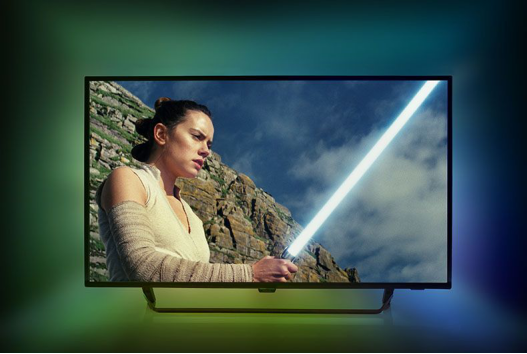
Congratulations! You've clearly followed our expert advice and chosen well. But before you give yourself over to Netflix until the sun comes up, there's still a handful of steps left once you’ve given your new TV a new home.
First, you’ll probably want to know how to set up your TV and get the best picture, right?
Then, we’d recommend looking at ways you can improve your TV’s sound, which often won't be very good out of the box.
Lastly, sit back and enjoy...



Leave a comment